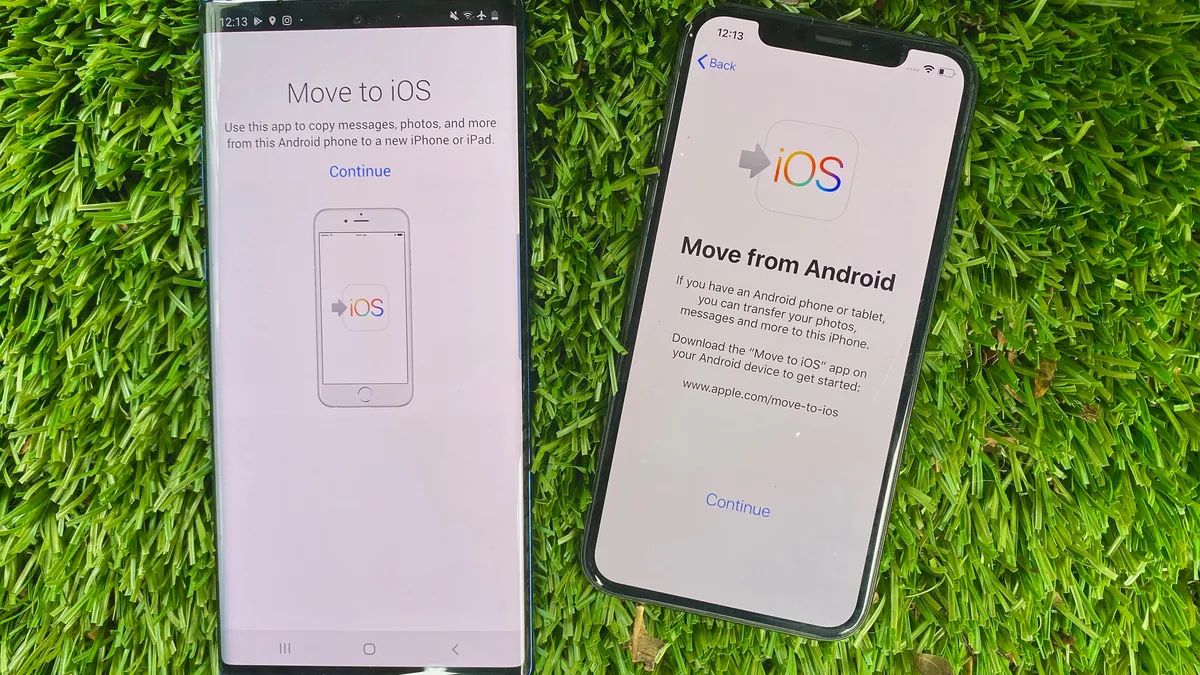
Before You Begin
Switching from an iPhone to an Android device involves several preparatory steps to ensure a smooth transition.
Backup Your iPhone Data
Backing up your iPhone data is essential. Use iCloud, Google One storage app, or store everything on a computer. This ensures your data remains safe and can be easily restored later.
Turn Off iMessage
To properly send and receive text messages on your new Android smartphone, turn off iMessage on your iPhone. Go to your iPhone's Settings menu, tap on Messages, and toggle off iMessage. Additionally, turn off FaceTime by going to Settings > Messages and toggling off FaceTime. To deregister iMessage, visit Apple’s support page for iMessage and follow the instructions to deregister your phone number.
Update Your iPhone Software
Ensure your iPhone is updated to the latest software version. This guarantees compatibility with the transfer methods you will be using.
Method 1: Using a Cable
Transferring data using a cable is one of the most efficient methods.
Prepare Your Devices
- Charge Both Phones: Fully charge both your iPhone and your new Android device.
- Get Your Cable: You’ll need either a Lightning to USB-C cable or a Lightning to USB cable and an OTG adapter.
Connect Your Devices
- Turn On Your New Android: After turning on the device, you’ll be prompted to plug your cable into both phones.
- Follow On-Screen Instructions: Select the data you want to transfer, including photos, videos, files, music, and wallpaper.
- Disconnect the Cable: Once your data is finished copying over to your new device, unplug the cable.
Specific Instructions for Google Pixel
- Charge both phones.
- Turn off iMessage across all Apple devices using the same Apple ID.
- Install the SIM card if your new Pixel came with one, then turn the phone on and tap the Start button.
- Connect to a Wi-Fi network.
- Select Copy your data on the Pixel.
- Unlock your old iPhone and plug in the Lightning power cable.
- Use the Quick Switch Adapter (QSA) provided by Google.
- Plug the QSA into the Pixel.
- When prompted, tap Trust on your iPhone.
- Sign into your Google Account on the Pixel.
- Choose the data to copy (photos, music, messages, etc.) and tap Copy.
Specific Instructions for Samsung Galaxy
- Charge both phones.
- Turn off iMessage across all Apple devices using the same Apple ID.
- Install the SIM card if your new Samsung Galaxy came with one, then turn the phone on.
- Connect to a Wi-Fi network.
- Use either the provided adapter or a USB-C to Lightning cable to connect your old iPhone to your new Samsung Galaxy.
- Follow the on-screen instructions to select the data you want to transfer, including photos, videos, files, music, and wallpaper.
Method 2: Using Wi-Fi
Transferring data over Wi-Fi is convenient, especially if you don’t have a cable handy.
Prepare Your Devices
- Charge Both Phones: Fully charge both your iPhone and your new Android device.
- Update iPhone Software: Ensure your iPhone is updated to the latest software version.
Connect Your Devices Over Wi-Fi
- Turn on your new Android device and select No cable when prompted.
- Follow the on-screen instructions to connect the two devices over Wi-Fi using the Switch to Android app.
- Select the data you want to transfer, including contacts, photos, videos, and calendar events.
- Sign into your Google account during the initial setup process with your new Android phone.
- Install the Switch to Android app from Apple’s App Store on your iPhone to transfer your contacts, calendar events, photos, and videos over Wi-Fi.
Method 3: Using Cloud Storage
Using cloud storage services like Google One or Proton Drive offers another way to transfer your data.
Prepare Your Devices
- Backup Data: Back up all your data on your iPhone using iCloud or Google One storage app.
Transfer Data Using Cloud Storage
- Install Google One on your iPhone and log in using your Google account.
- Go to Settings > Sync settings and check all options to ensure they are syncing correctly.
- During the initial setup process with your new Android phone, restore backed-up data from Google One.
Additional Tips
Using Google’s Switch to Android App
Google’s Switch to Android app can help transfer a wide range of data from your iPhone to your new Android device.
- Download the Switch to Android app from Apple’s App Store on your iPhone.
- Launch the app and accept the terms.
- Select Copy data and allow any necessary permissions.
- The camera will activate a QR code scanner if you’re doing a wireless transfer.
- Turn on the new Android device and hit Get started to begin the setup process.
- Follow instructions until you reach the Copy apps & data page. Hit Next three times.
- Plug your iPhone into your Android phone using a cable that has the necessary connectors. You can also use an adapter if needed.
- Your iPhone will ask you to Trust the device.
- On the Android device, sign into your Google account.
- Choose what you want to copy and tap Copy.
Transferring data from an iPhone to an Android device doesn’t have to be complicated. By using the right tools and following these steps, you can ensure that all your important data is safely transferred to your new device. Whether you choose to use a cable, Wi-Fi, or cloud storage, each method has its advantages and can be tailored to fit your specific needs. Enjoy your new Android experience without losing any of your precious data.
